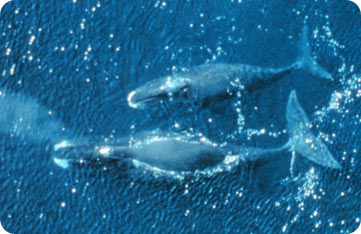170810-bowhead.jpg

Bowhead whales. Credit: National Oceanic & Atmospheric Administration
Ice is no problem for a whale that lives its entire life in Arctic waters. It simply rams its way through -- cracking ice that can be up to two feet thick. Its “ram” is a thick skullbone that looks like an archer’s bow -- earning the whale its name: the bowhead.
It may be one of the longest-lived mammals on the planet. Scientists have dug out harpoon points that were more than a century old. And it’s possible that one bowhead was more than 200 years old when he died a couple of decades ago.
The bowhead is one of the biggest of all whales. A typical adult female is about 60 feet long, and weighs up to a hundred tons. About a third of that length is its head, with a mouth that’s big enough to drive a pickup truck through.
That big mouth got the bowhead into trouble -- not because it’s loud, but because of what’s inside.
The bowhead eats tiny animals -- up to a couple of tons a day. It catches them by filtering water through long, tough rib-like structures known as baleen -- roughly 700 of them per whale. Also known as whalebone, these structures became a popular raw material for everything from corset ribs to fishing rods.
Commercial whalers caught bowhead by the thousands, extracting both the baleen and the whale’s thick blubber, which was boiled down to make oil; more about whale oil on our next show.
As a result, the bowhead was pushed to the brink of extinction. But international treaties have banned commercial bowhead whaling, so the population of this hard-headed whale is recovering.

